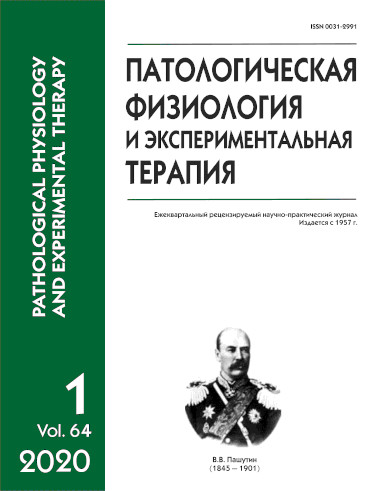The state of barriers for microbial colonization of the dentition in the conditions of simulated weightlessness
Abstract
Comprehensive evaluation of 20 male volunteers aged 19‒26 was conducted during exposure to 5-day “dry” immersion (DI). The aim was to examine periodontal tissues in the conditions of 5-day “dry” immersion, specifically, to study the anaerobic component of periodontal microbiota, immunological parameters of the oral fluid, and blood flow velocity in the periodontal microcirculation (PMC). Methods. Microgravity was modeled with the 5-day DI. Evaluation of the condition of periodontal tissues included microbiological, immunological, and microcirculatory studies. The studies were performed on day 1 (baseline), day 5 of immersion (completion), and day 7 upon the end of immersion. All studies were performed in the fasting state, before toothbrushing, in the supine position in the immersion bath, and in the sitting position 7 days after the immersion. PMC was studied at the same time points as in the immunoglobulin study. Blood flow in periodontal tissues was measured using the high-frequency ultrasonic Doppler fluorimetry (HFUDF) with a Minimax-Doppler-K ultrasonic dopplerograph (St. Petersburg) with a continuous radiation sensor at an operating frequency of 20 MHz. Results. Five major periodontopathogenic bacteria (Aggregatibacter actinomycetemcomitans, Tannerella forsythia, Prevotella intermedia, Porphyromonas gingivalis, and Treponema denticola) emerged as a part of the periodontal microbiota during the experiment. An increased concentration of sIgA was observed in the gingival fluid, which was associated with the emergence of periodontopathogenic microbiota. On day 5 of SI and day 7 following SI, 12 subjects had a statistically significant decrease in blood flow velocity in PMC of both the lower and upper jaws. 6 subjects showed morphological and functional rearrangement of the PMC, including dilation of capacitance vessels (venules) with partial capillary depletion, which indicated a venular component response to the conditions of modeled microgravity. Conclusion. This comprehensive study showed predisposition of periodontal tissues to development of inflammatory diseases and impaired functioning of the periodontal barrier under the conditions of DI.






